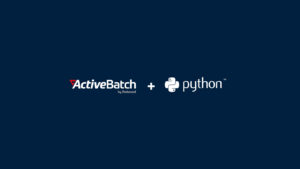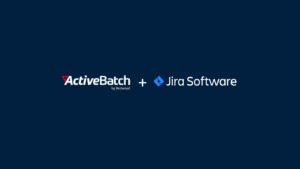9 Insurance Workflows You Can Automate in 2023
Learn how insurance companies use workflow automation to boost productivity, reduce errors, and save time.

With the rising demand for digital capabilities in the insurance industry, workflow automation software offers a competitive advantage by providing seamless integration with various systems, eliminating manual data entry, and ensuring accurate and real-time information flow.
It helps insurance organizations meet customers’ evolving expectations, who increasingly expect digital convenience and efficiency in their insurance processes.
We’re going to review what insurance workflow automation software is and 9 use cases for insurance companies.
What is Insurance Workflow Automation Software?
Insurance Workflow Automation Software is a specialized solution designed to streamline and optimize business processes within the insurance industry. It automates manual and repetitive tasks, digitizes document management, facilitates seamless communication and collaboration, and ensures compliance with industry regulations.
Why Do You Need Insurance Process Automation?
With insurance automation solutions, you can:
- Streamline and optimize insurance workflow processes
- Automate manual and repetitive tasks
- Digitize document management for easy access and organization
- Improve operational efficiency and productivity
- Enhance collaboration and communication among teams and departments
- Ensure compliance with industry regulations
- Accelerate response times and improve customer service
- Gain better visibility and tracking of tasks and performance
- Reduce errors and improve accuracy
- Increase efficiency and profitability
Now, let’s take a look at 9 examples of automated workflows for insurance companies.
1. Policy Issuance and Renewals
Problem: Insurance companies often face challenges moving policyholders from the initial inquiry stage to obtaining a quote and finalizing the policy proposal. Manual tasks within insurance teams, such as printing, scanning, and emailing paper documents, contribute to delays and errors in the workflow.
Solution: Using an automation platform integrated with digital-first document tools like optical character recognition (OCR) and electronic signatures, insurance companies can offer online, paperless insurance applications. This enables customers to initiate and resume their applications seamlessly from any device, eliminating the need for physical paperwork. The automation platform tracks the progress of the application, gathers electronic signatures, and extracts customer data directly into backend systems.
This significantly reduces the risk of human errors and omissions, resulting in faster proposal creation times and potentially improving efficiency by up to a fourth of pre-automation times.
2. Medical Insurance Claims Processing
Problem: Insurance companies often encounter challenges in processing claims, which involve complex documentation, manual data entry, and multiple stages of approval. This manual process can lead to slow turnaround times, errors, and increased administrative overhead, affecting customer satisfaction and operational efficiency.
Solution: Insurance workflow automation software can automatically capture and validate claim information, integrate with relevant systems to retrieve policy data, and initiate the necessary workflows for review, assessment, and approval. This automation eliminates the need for manual data entry, reduces errors, and accelerates the overall claims processing timeline. Additionally, the platform can provide real-time updates to claimants, improving transparency and customer experience.
3. Underwriting
Problem: Manual review processes, data entry, and subjective decision-making can lead to delays, inconsistencies, and potential errors in risk assessment and policy determination.
Solution: Automation software can capture and analyze applicant data, perform rule-based assessments, and integrate with relevant data sources and analytics tools for risk evaluation. This automation streamlines the underwriting process, reduces manual efforts, and ensures consistent and objective decision-making. With real-time access to data and automated calculations, underwriters can make more informed and efficient decisions, resulting in faster policy issuance and improved underwriting accuracy.
4. Data Management
Problem: Insurance companies often struggle with the manual handling of large volumes of data, including customer information, policy details, claims data, and financial records.
Solution: Insurance automation software can integrate with various data sources and systems, consolidate and validate data, perform data transformations, data collection, and ensure data quality and consistency. It provides a centralized repository for storing and accessing insurance data, with features such as data deduplication, synchronization, and enrichment.
5. Document Management and Archiving
Problem: Manual processes such as printing, scanning, and physical storage can be time-consuming, prone to errors, and difficult to track.
Solution: The software offers features like document versioning, metadata tagging, and search capabilities, enabling quick and efficient retrieval of insurance-related documents. Also, the platform ensures data security through access controls, encryption, and audit trails, mitigating risks associated with physical document storage.
6. Compliance and Regulatory Reporting
Problem: Manual processes for data gathering, verification, and report creation are time-consuming, prone to errors, and can result in compliance gaps and penalties.
Solution: With automated compliance and regulatory reporting, insurance companies can mitigate compliance risks, improve data governance, and enhance their overall regulatory compliance posture.
7. Customer Onboarding
Problem: The challenges and communication roadblocks that arise during the insurance application process often extend to the broader realm of customer onboarding and the customer journey. Manual processes and disjointed systems can result in delays, errors, and a fragmented customer experience.
Solution: Automated workflows can ensure timely and consistent processing of applications, reduce administrative overhead, and provide customers with a smooth and efficient onboarding experience. By integrating with existing systems, the software can ensure data accuracy and eliminate the need for manual data entry, resulting in improved operational efficiency, insurance sales, and enhanced customer satisfaction.
It also enables automated follow-ups and communication with policyholders. Through automated reminders, notifications, and personalized messages, insurance providers can proactively engage with customers and provide updates on claims, policy renewals, and other touchpoints.
8. Agent and Broker Management
Problem: Manual processes for commission calculations, performance tracking, and communication can be time-consuming and error-prone and hinder productivity and transparency in the relationship between insurers and agents.
Solution: Automation software can automate commission calculations based on predefined rules, track agent performance metrics, and facilitate seamless communication through centralized messaging and collaboration tools. Agents can access real-time performance data, while insurers can efficiently manage and incentivize their network, leading to improved productivity and stronger partnerships.
9. Group Quote Marketing
Problem: Creating customized group insurance quotes for potential customers requires a personalized approach within the insurance workflow. However, tracking and analyzing past customer requests can be challenging, leading to a lack of visibility and hindered marketing campaign optimization.
Solution: By embracing automated digital analytics and moving away from paper-based data, insurance companies gain a comprehensive understanding of customer segments. This allows for easier tracking of trends and provides valuable marketing insights that can be adapted to current market demands. With this enhanced visibility, insurance teams can effectively shape solutions that strike a balance between internal risk considerations and the specific policy needs desired by diverse groups.
Enhance Insurance Workflows with ActiveBatch
Insurance providers vowing to keep up with the digital transformation can’t overlook insurance workflow automation to help speed up tedious manual processes.
ActiveBatch offers a comprehensive solution for insurance workflow automation, enabling insurance companies to streamline and optimize their critical processes. With features such as seamless integration with insurance systems, advanced scheduling capabilities, real-time monitoring, and scalability, ActiveBatch empowers organizations to improve efficiency, accuracy, compliance, and customer satisfaction.
Frequently Asked Questions
Yes, insurance workflow automation can incorporate machine learning (ML) techniques to enhance its capabilities. Machine learning algorithms can be utilized to analyze and make predictions from large volumes of data, enabling insurance companies to automate decision-making processes and improve workflow efficiency.
Learn more about what IT workflow automation can do for your insurance company today.
Yes, ActiveBatch supports Robotic Process Automation (RPA) capabilities. RPA allows for the automation of repetitive and rule-based tasks by mimicking human interactions with software applications. ActiveBatch can integrate and orchestrate RPA bots in larger end-to-end workflows, enabling seamless coordination between human and robotic workers.
Read about how RPA fails to meet IT expectations.
Yes, insurance workflow automation platforms like ActiveBatch can integrate with Customer Relationship Management (CRM) systems. This integration enables the seamless exchange of data between the automation platform and CRM, ensuring a holistic view of customer information, streamlined customer interactions, and personalized touchpoints throughout the insurance workflow.
Discover how you can use RPA for insurance underwriting.
Insurance workflow automation platforms like ActiveBatch can integrate with legacy systems by using connectors and APIs.
Request our pricing today.







